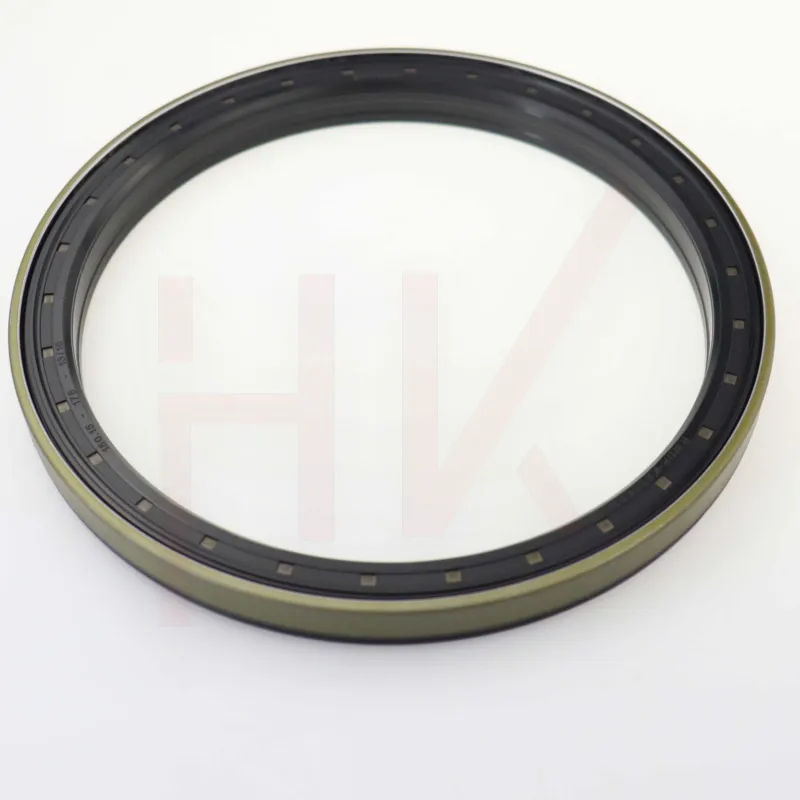Tach . 16, 2024 09:01 Back to list
rear wheel hub seal
Understanding the Importance of Rear Wheel Hub Seals
The rear wheel hub seal is an essential component of a vehicle's wheel bearing assembly. Often overlooked, these seals play a critical role in maintaining the overall performance and reliability of the vehicle. They act as a barrier to keep contaminants like dirt, dust, and water from entering the wheel hub, while also preventing the lubrication grease from leaking out. Understanding the function, types, and maintenance of rear wheel hub seals can ensure smoother and safer driving experiences.
Function of Rear Wheel Hub Seals
The primary function of rear wheel hub seals is to protect the wheel bearings. Wheel bearings allow the wheels to rotate freely, and they are typically lubricated with grease. A well-functioning seal keeps this grease in place while preventing external contaminants from entering. Over time, seals can wear out or become damaged due to factors such as extreme temperatures, exposure to road debris, or improper installation. When this happens, the lubricant can leak out, leading to insufficient lubrication, which may eventually cause the wheel bearings to fail.
Types of Rear Wheel Hub Seals
There are a few different types of rear wheel hub seals, which can vary based on the vehicle type and design
. Common types include1. Lip Seals These seals feature a flexible lip that creates a tight seal against the surface. They are widely used in various applications due to their cost-effectiveness and reliability.
2. Flanged Seals These have a flange that helps in the easy installation and alignment of the seal. They are beneficial in situations where space is limited.
3. Labyrinth Seals Unlike traditional seals, labyrinth seals do not have a direct sealing lip. Instead, they create a series of grooves that allow contaminants to be trapped outside the bearing while keeping grease in.
4. Double-Lip Seals These seals provide an extra layer of protection by having two lips, which significantly reduces the chance of grease leaking and contaminants entering.
rear wheel hub seal

Signs of a Failing Rear Wheel Hub Seal
Detecting a failing rear wheel hub seal early can save you from costly repairs and ensure your vehicle operates efficiently. Here are some signs that may indicate the need for a seal inspection or replacement
- Noise If you hear a grinding or humming noise coming from the wheels, it may indicate that the wheel bearings are not receiving adequate lubrication due to a failing seal. - Oil or Grease Leaks If you notice grease spots on the tires or around the wheel area, it's a sign that the seal has failed, allowing lubrication to escape.
- Vibration Excessive vibration while driving can be a sign of bearing failure, which might result from a compromised seal.
- Uneven Tire Wear If the tires are wearing unevenly, it could be due to insufficient lubrication affecting the wheel bearing's performance.
Maintenance and Replacement
Regular vehicle maintenance is crucial for ensuring the longevity of rear wheel hub seals. When servicing your vehicle, always ask your mechanic to check the seals for any signs of wear or damage. If replacement is necessary, it is vital to choose high-quality seals that match your vehicle specifications to ensure proper fit and function.
Additionally, proper installation of the seals is essential. Incorrect installation can lead to premature failure, so it’s recommended that a trained professional performs the replacement.
Conclusion
Rear wheel hub seals are critical for the longevity and reliability of your vehicle. They protect essential components from contaminants and ensure proper wheel bearing lubrication. Understanding their function, recognizing signs of failure, and emphasizing proper maintenance can greatly enhance your driving experience. By being attentive to these details, you can prolong the life of your vehicle's wheel assembly and ensure a smoother ride on the roads ahead. So, the next time you perform vehicle maintenance, don’t forget to check those rear wheel hub seals—they do more than you might think!
-
TCN Oil Seal Metal Ring Reinforcement for Heavy Machinery
NewsJul.25,2025
-
Rotary Lip Seal Spring-Loaded Design for High-Speed Applications
NewsJul.25,2025
-
Hydraulic Cylinder Seals Polyurethane Material for High-Impact Jobs
NewsJul.25,2025
-
High Pressure Oil Seal Polyurethane Coating Wear Resistance
NewsJul.25,2025
-
Dust Proof Seal Double Lip Design for Construction Equipment
NewsJul.25,2025
-
Hub Seal Polyurethane Wear Resistance in Agricultural Vehicles
NewsJul.25,2025
-
The Trans-formative Journey of Wheel Hub Oil Seals
NewsJun.06,2025
Products categories
















